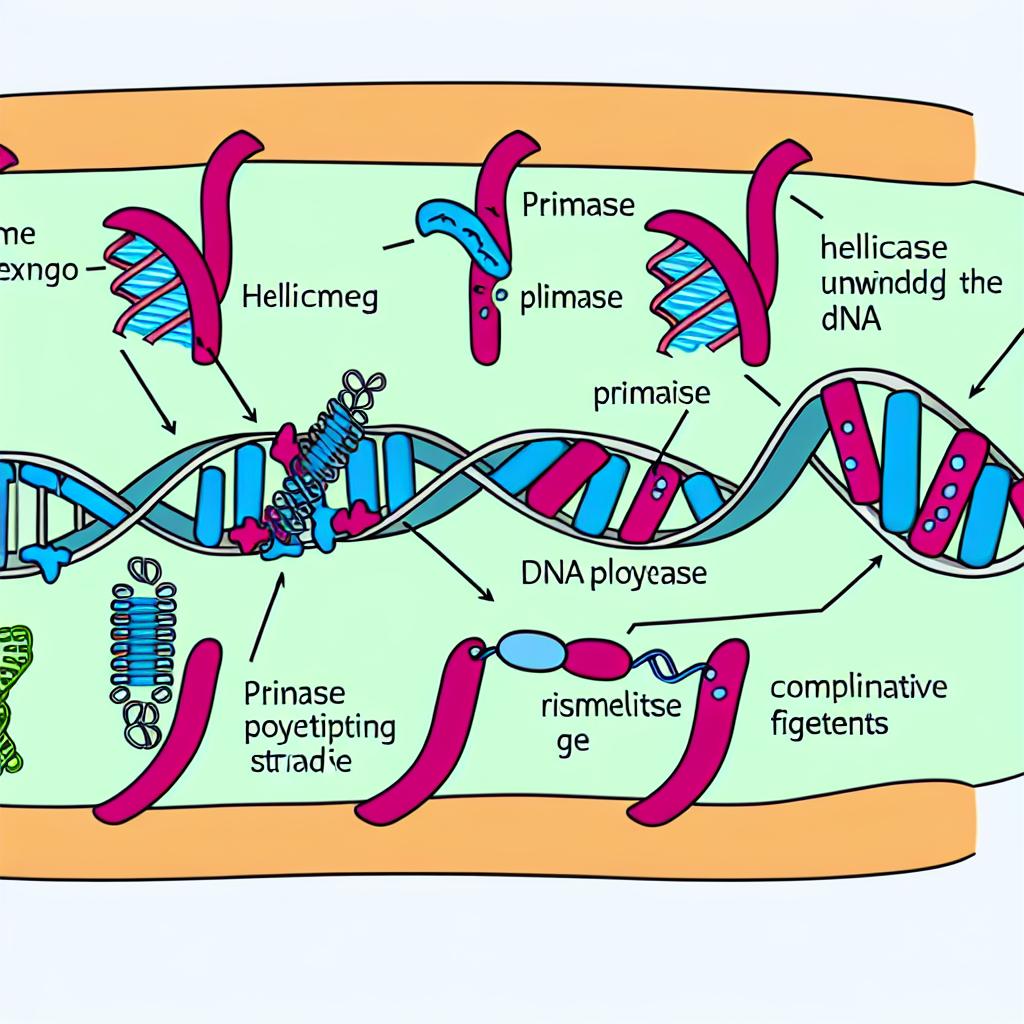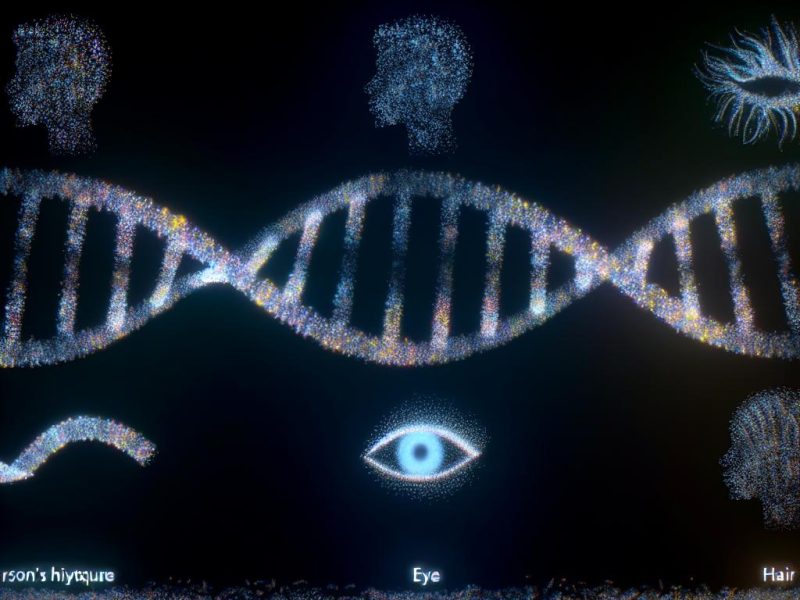Introduction to DNA Replication
DNA replication is a fundamental process by which a cell copies its DNA before cell division. This ensures that each new cell receives a complete set of genetic instructions. The process is pivotal for growth, reproduction, and maintenance of cellular functions in all living organisms. Understanding DNA replication is not only crucial for comprehending how life perpetuates but also for appreciating the complex mechanisms that sustain genetic integrity over generations.
Key Components Involved in DNA Replication
The DNA replication process involves a series of sophisticated steps that require several key components. Among these elements are the DNA template, a range of enzymes, and nucleotides, each playing a distinct role.
DNA Template: The template is a pre-existing DNA strand that serves as a guide for creating a new, complementary strand. By providing this pattern, the template ensures that the genetic information is faithfully transferred during replication.
Enzymes: A variety of enzymes are crucial for the replication process. These enzymes have specialized functions, such as unwinding the DNA helix, synthesizing new strands, and correcting errors. Each enzyme is tailored to perform its task with precision and efficiency, contributing to the overall fidelity of replication.
Nucleotides: These are the fundamental building blocks of DNA. Each nucleotide consists of a sugar, a phosphate group, and a nitrogenous base. During replication, nucleotides are assembled into the new DNA strand by the action of specific enzymes, ensuring that the base pairing rules (adenine with thymine and guanine with cytosine) are adhered to.
Initiation of DNA Replication
Initiation is the critical first phase of DNA replication. The process begins at distinct points along the DNA molecule known as origins of replication. Each origin acts as a starting site for the replication machinery.
Helicases: Enzymes known as helicases are pivotal for the initiation phase. They unwind the DNA double helix, which is a prerequisite for strand separation. This unwinding creates a Y-shaped structure called the replication fork, a dynamic region where replication actively occurs.
Single-Strand Binding Proteins: To prevent the destabilized DNA single strands from re-annealing, single-strand binding proteins quickly bind to them. This stabilization is essential to keep the strands separated long enough for the replication machinery to function effectively.
Role of Primase
Primase performs a crucial initiation role by laying down short RNA primers that are complementary to the DNA template strand. This short RNA primer is indispensable as it provides a free 3’ hydroxyl group that DNA polymerase requires to commence DNA synthesis.
Without primase and its RNA primers, DNA polymerase would be unable to begin the synthesis of the new DNA strand. This dependency highlights the collaborative nature of the molecular processes governing replication.
Elongation: Building the New DNA Strand
Elongation is the phase where the actual duplication of DNA strands occurs. DNA polymerases meticulously add nucleotides to the 3’ end of the RNA primer, matching each existing base on the template strand with its corresponding nucleotide.
Anti-parallel and Semi-conservative: The elongation process is inherently anti-parallel and semi-conservative. Each resultant double helix consists of one original DNA strand and one newly synthesized strand, ensuring accuracy and continuity of genetic instructions.
Leading vs. Lagging Strand: On the leading strand, DNA polymerase synthesizes continuously in the direction of the replication fork. Conversely, the lagging strand is synthesized discontinuously in short stretches known as Okazaki fragments. These fragments are later connected by the enzyme DNA ligase, ensuring a continuous DNA strand.
Termination of DNA Replication
The termination phase signifies the completion of DNA replication when the entire genome has been faithfully copied. Specific sequences within the DNA indicate termination points, guiding the replication machinery on where to cease synthesis.
In the final steps, any remnant RNA primers are excised and replaced with DNA. Furthermore, the replicated DNA strands re-coil into the familiar double-helix conformation, preparing them for the next cellular activities, including subsequent rounds of division or cellular function.
Proofreading and Error Correction
High fidelity is a hallmark of DNA replication, attributable in large part to the proofreading capabilities of DNA polymerases. As nucleotides are added, the enzyme continuously evaluates accuracy. If an incorrect nucleotide is incorporated, the polymerase enzyme can excise and replace it with the correct one.
This meticulous proofreading mechanism is essential for minimizing replication errors that could lead to mutations. Consequently, it maintains genetic stability and prevents potential malfunctions in the organism’s growth and development.
Conclusion
The DNA replication process is a highly regulated and intricate mechanism, vital for cell division and the preservation of genetic information. Despite the potential for errors, the cellular proofreading and repair mechanisms are adept at ensuring replication accuracy.
In addition to its biological significance, DNA replication is a foundation for various scientific and technological pursuits. Whether it’s in the realm of genetics, biotechnology, or medical research, understanding DNA replication serves as a gateway to numerous applications, enhancing knowledge and advancing innovations in these fields.
For a more in-depth understanding, those interested may wish to delve into scientific literature or access educational resources provided by research institutions and university databases. Such resources can offer deeper insights into the molecular intricacies of DNA replication and its broader impact on science and medicine.



